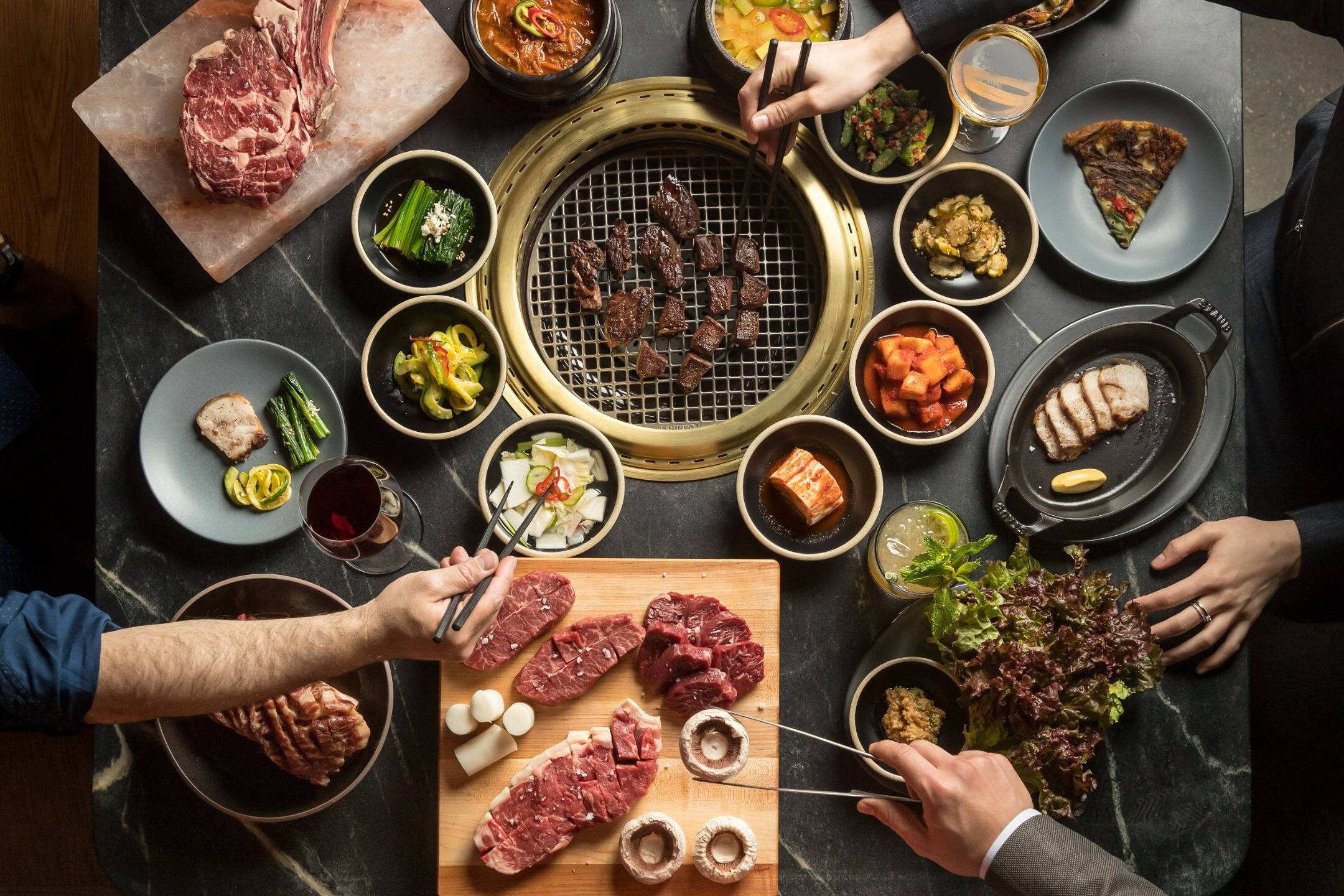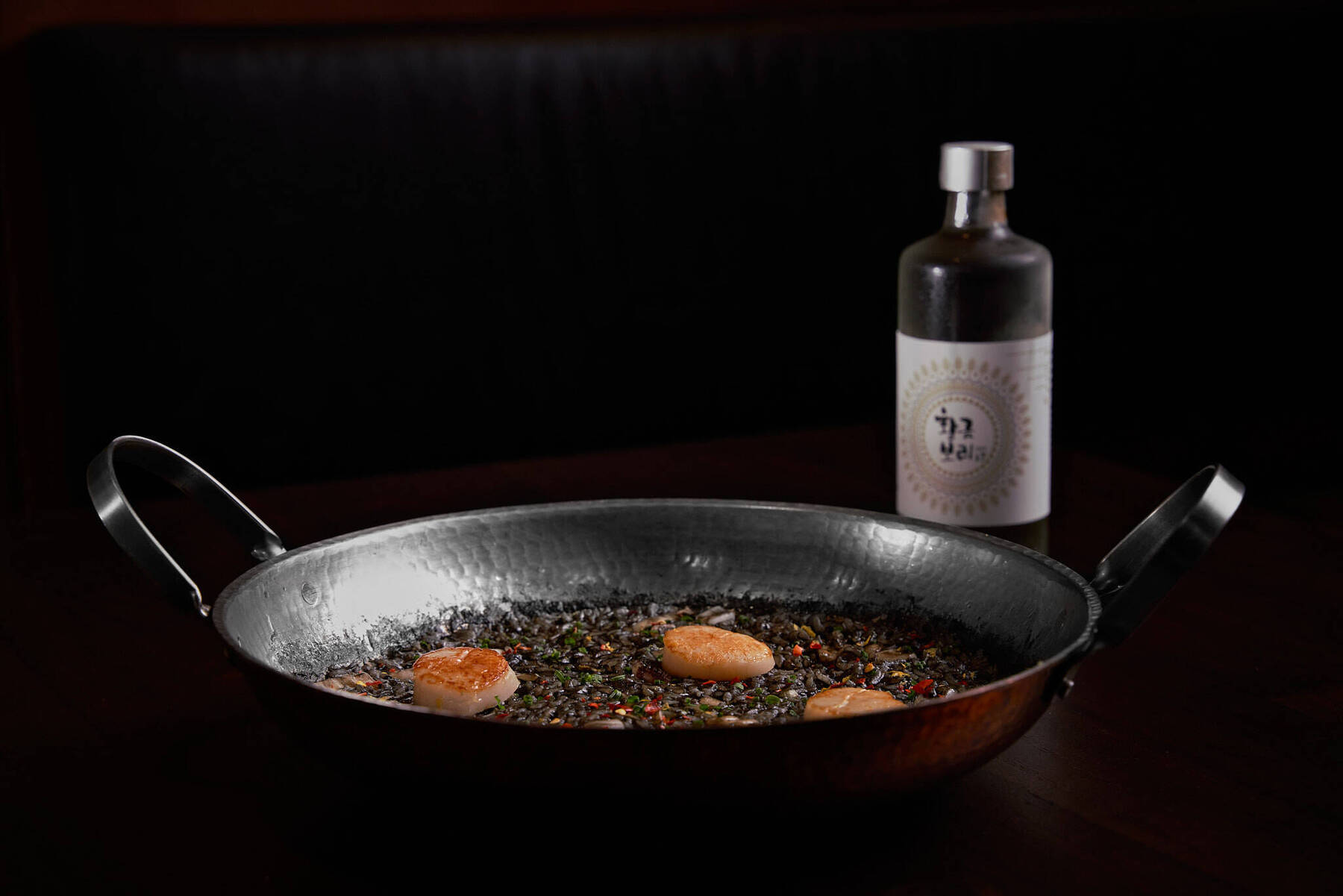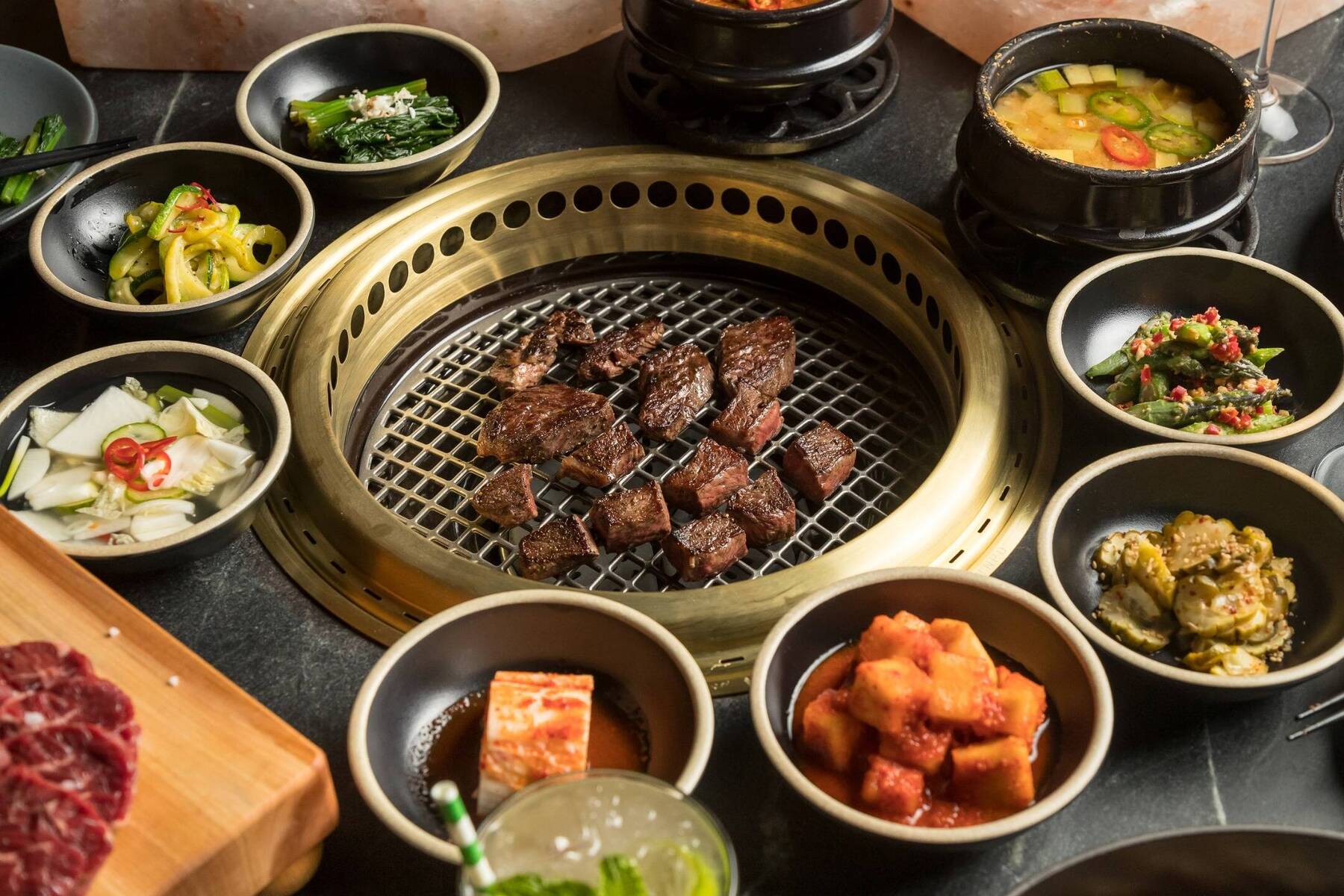Jua
It's rare to find a tasting menu in New York for less than $100 so a restaurant of Jua's calibre at this price point is the kind of gem that locals keep close to the vest. The first course of glistening uni may appear to be a simple uni nigiri, but looks can be deceiving. The crispy seaweed chip hides pickled cucumber and tuna rice within, and this bright, flavoursome bite sets the tone for an unforgettable evening.
Chef Hoyoung Kim was the executive chef at Jungsik before opening Jua, where he specialises in wood-fired cooking inspired by Korean flavors. Squid ink sotbap is essentially Korean paella – the rice is cooked in smoked anchovy broth and tossed with kimchi and squid with plump diver scallops on top. You can add langoustines and abalone if you're feeling extra. There might be incredibly juicy sasso chicken, served with a dollop of cumin aioli and soy pickles or sea bream crudo delicately dressed with kombu, yuja and wild blueberries. The six-course menu changes regularly, so there's always something new to discover.





















Comments